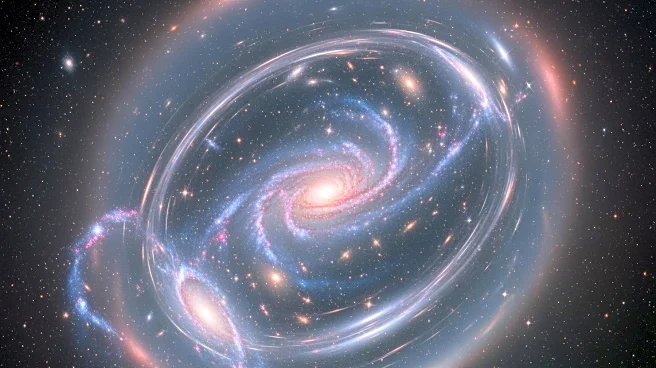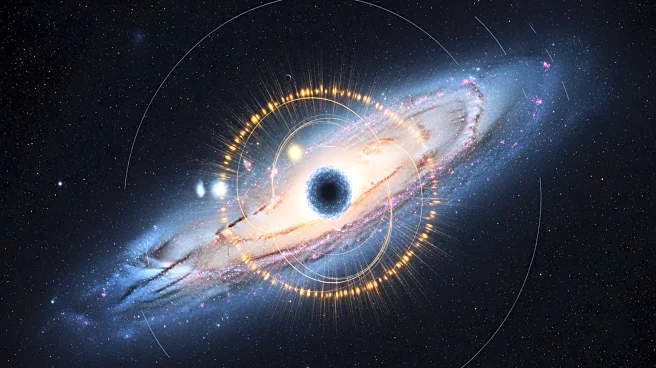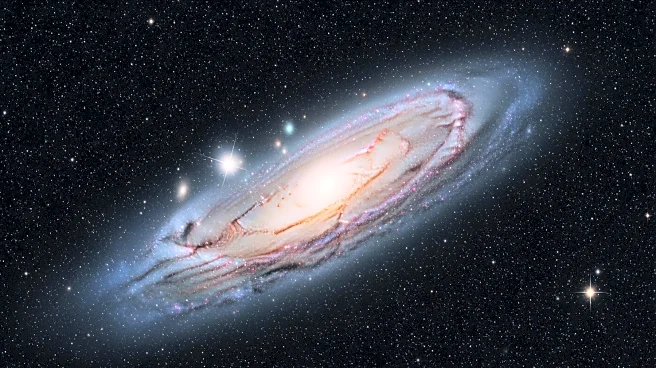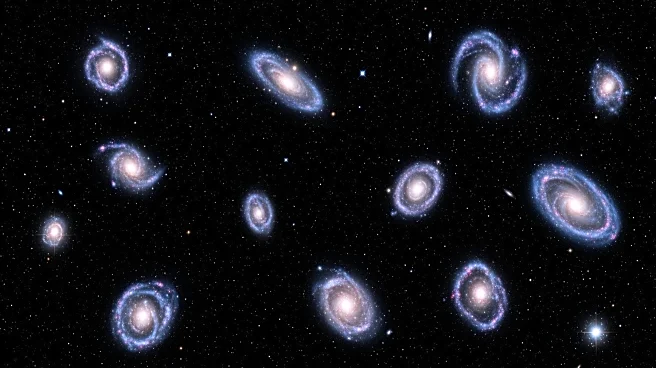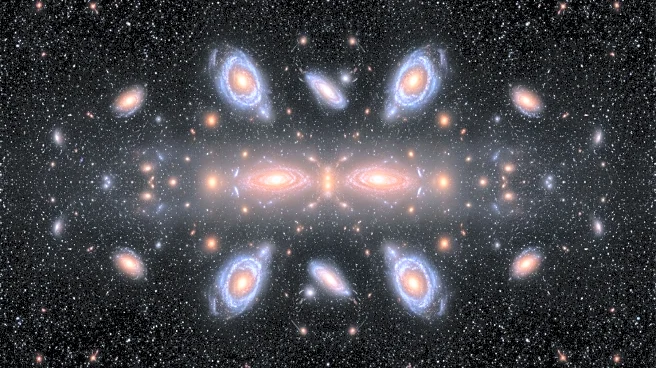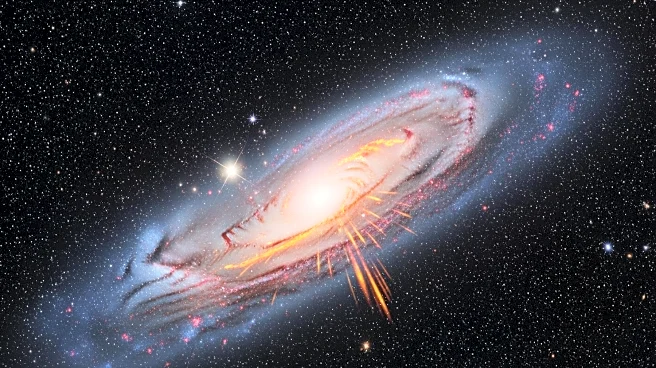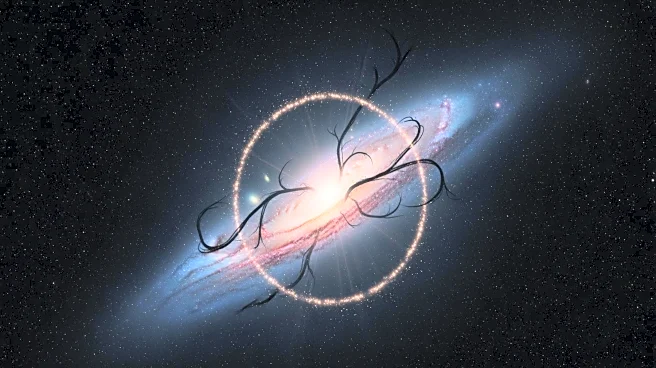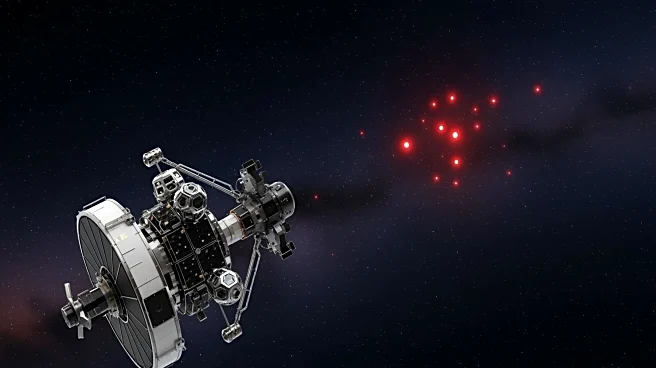What's Happening?
Astronomers have identified an invisible mass in space weighing approximately one million solar masses, using a technique known as gravitational lensing. This discovery was made possible by an 'Earth-sized
super-telescope,' which is a combination of multiple radio telescopes including the Green Bank Telescope, the Very Long Baseline Array, and the European Very Long Baseline Interferometric Network. The mass was detected through a subtle wobble in the arc of radio waves forming the Einstein ring, a phenomenon where a massive galaxy bends the light from a more distant galaxy, creating a halo effect. This finding is significant as it represents the lowest-mass dark matter clump ever detected, which is about 100 times less massive than the previous record holder.
Why It's Important?
The discovery of this dark matter clump is crucial for understanding the universe's structure and the role of dark matter, which is believed to make up a significant portion of the universe's mass. Dark matter does not interact with electromagnetic forces, making it invisible and detectable only through its gravitational effects. This finding supports the Lambda cold dark matter (ΛCDM) theory, which posits that dark matter forms the foundation of universal structures. The ability to detect such low-mass dark matter clumps could lead to further discoveries, enhancing our understanding of galaxy formation and the universe's evolution.
What's Next?
Following this discovery, astronomers aim to identify more dark matter clumps to verify the consistency of their findings with existing models. The ongoing search for these 'dark objects' could provide further evidence supporting the ΛCDM theory. Future studies will likely focus on refining detection techniques and exploring the distribution of dark matter clumps within our own galaxy and beyond.
Beyond the Headlines
This discovery highlights the challenges and advancements in detecting dark matter, which remains one of the most elusive components of the universe. The use of gravitational lensing as a tool for such discoveries underscores the innovative methods scientists employ to study phenomena that cannot be observed directly. The findings could also influence theoretical models of the universe, prompting revisions or confirmations of existing cosmological theories.
